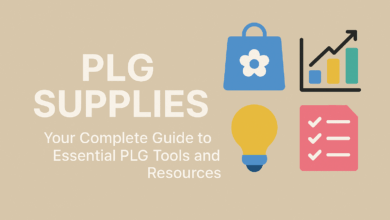Why Non-Fault Accidents Are More Stressful Than You Think

The Initial Shock: Being in the Right Doesn’t Make It Less Traumatic
No matter who’s at fault, being in a car accident is a jarring experience. One second you’re driving along minding your own business, and the next you’re dealing with a loud crash, a spinning steering wheel, and the surge of adrenaline that comes with a sudden shock. Even when you know the accident wasn’t your fault, your body and mind still react as if you’re in danger.
There’s also the emotional sting of injustice. You did everything right, yet you’re the one left dealing with the aftermath. That sense of helplessness can be deeply unsettling, especially if you’ve never been in an accident before. Know that there are claims management companies that can assist you during this difficult time. Click here to learn more.
The Burden of Proving Innocence
Even if you’re clearly not to blame, you still have to show it. That means collecting evidence at the scene—photos, witness details, dashcam footage if you’re lucky enough to have it. But in the chaos of a crash, many people forget these steps. And if the other driver tries to twist the story, things can get complicated fast.
Insurance companies will want detailed statements, and sometimes investigations are needed before blame is officially placed. All of this creates a cloud of uncertainty, which can be incredibly stressful when you’re just trying to move on.
The Paperwork Parade: Admin Doesn’t Stop Just Because It’s Not Your Fault
After a non-fault accident, you’re often plunged into a sea of admin. You’ll be sorting out repair quotes, arranging courtesy cars, speaking to insurers (yours and theirs), and filling out endless forms. It’s time-consuming and, frankly, draining.
If you’re working or juggling family life, all this extra admin can feel overwhelming. Just because it wasn’t your fault doesn’t mean you won’t be stuck spending hours on hold or trying to chase updates on your claim.
Financial Uncertainty
Here’s a hard truth: even non-fault accidents can end up costing you. You might need to pay for temporary travel if your car is undriveable, or cover your excess upfront before it’s claimed back. And while your insurer may recover these costs later, you’re still out of pocket for a while.
Then there’s the fear of rising premiums. Yes, you weren’t to blame—but that doesn’t always stop insurers from hiking your prices at renewal. It can feel like being penalised for something you didn’t do.
Emotional & Mental Health Toll
The mental aftermath of an accident isn’t always visible. You might find yourself nervous behind the wheel, flinching at every brake light, or avoiding certain roads altogether. Anxiety and even mild post-traumatic stress can linger long after the car’s been repaired.
Some people also experience trouble sleeping or repeatedly replay the moment of impact in their heads. These emotional effects are valid and deserve attention—especially when you feel like you’re “supposed” to be fine because it wasn’t your fault.
Tips for Determining a Non-Fault Accident
Of course, nobody wants to be in a car accident. So, after it’s happened, you can start to second-guess everything. Were there things you could have done differently to avoid the crash? Were your actions to blame for what happened? It’s natural to feel guilty and try to blame yourself. However, for many, the reality is that the other driver caused the accident to occur. In order to figure out what type of situation you’re in, here are some tips to determine liability.
Think About the Lead-Up
It’s important to take a step back from the situation and consider the moments before the crash. What were you doing? Were you obeying all of the rules of the road? Thinking about your actions and what led up to this scary moment can allow you to piece together the story. Note that it might be difficult to think about the crash at first, and it can be a blur. But the details will come back to you.
Consider Your Interaction
You will have had to speak to the other driver after the incident. So, did they admit liability for what happened? There are some people who will be honest straight away. However, others can be defensive. Think back to your exchange with the other driver and whether they discussed their actions and what caused the crash. This might give you an answer.
Check Out the Evidence
You have to gather evidence at the crash. This can include taking photos of the road, vehicles and getting witness statements. It’s also very helpful when you have dashcam footage, as this shows you exactly what happened. Therefore, examining the evidence can often show you who caused the accident.
Read More: The Potential of Short Links with ShortEngine.com
Conclusion
Being involved in a non-fault accident can be incredibly frustrating, not just because of the practical hassle but also because of the emotional impact. You’re left to pick up the pieces of something you didn’t cause—and that can feel deeply unfair.
So if you or someone you know is going through this, don’t brush it off. Being “not at fault” doesn’t mean you’re not affected. Acknowledge it, talk about it, and seek help where needed—because your peace of mind is just as important as the state of your car.



